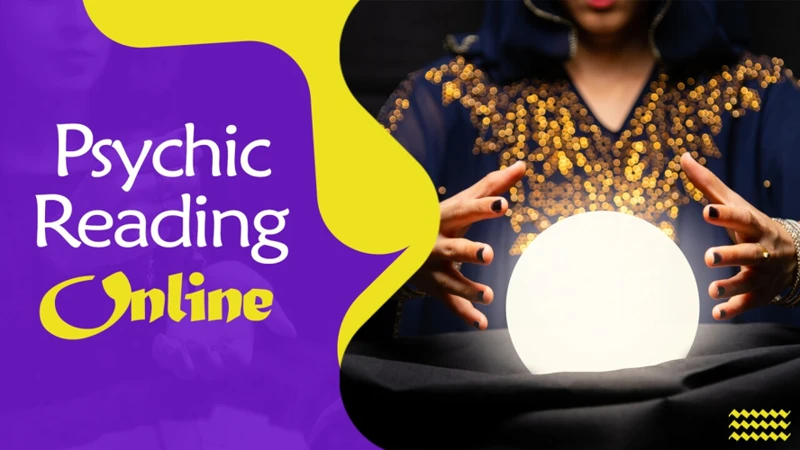Have you ever wondered if objects could hold memories? Or if you could tap into the energy and emotions connected to those objects? Psychometry, the ability to perceive information about an object or person by touching it, allows you to do just that. It is an intriguing psychic skill that can provide deep insights and connections to the past. In this article, we will explore step-by-step how to develop psychometry skills so that you can unlock this fascinating ability within yourself. From understanding the science behind psychometry to refining your skills and taking them to the next level, we will cover everything you need to know to become proficient in psychometry. So, if you’re ready to embark on a journey of unlocking the secrets held within objects, let’s dive in!
Contents
- Understanding Psychometry
- Preparing Yourself for Psychometry
- Developing Psychometry Abilities
- Refining Your Psychometry Skills
- Taking Your Psychometry to the Next Level
- Conclusion
-
Frequently Asked Questions
- What is the history of psychometry?
- Can anyone learn psychometry?
- How does psychometry work?
- What can psychometry reveal?
- Is psychometry a psychic ability?
- Can psychometry be used for healing purposes?
- What are some common tools used in psychometry?
- Can psychometry be practiced remotely?
- Is psychometry similar to retrocognition?
- Are there any ethical considerations in practicing psychometry?
- References
Understanding Psychometry

Psychometry is a fascinating psychic ability that allows individuals to gain insights and information by simply touching objects. This unique skill enables practitioners to tap into the energetic imprints left on objects and uncover the stories and memories associated with them. By honing your psychometry skills, you’ll be able to perceive the emotions, experiences, and even the history of an object or person just by holding it in your hands. To truly understand the depth and potential of psychometry, it is important to explore different techniques and approaches that can enhance your abilities. By doing so, you can unlock a whole new world of perception and connection. So, if you’re ready to delve deeper into the realm of psychometry, click here to explore different techniques in psychometry and expand your understanding of this captivating practice.
What is Psychometry?
Psychometry is a psychic ability that allows individuals to gather information and insights by touching objects. When a person with psychometric abilities comes into contact with an object, they can pick up on the energetic imprints left on it. These imprints can include emotions, memories, experiences, and even the history of the object or the people who have interacted with it. It is believed that every object holds its own unique energy signature. This energy can be sensed and interpreted by those with developed psychometry skills. Psychometry is often referred to as “object reading” because practitioners can gather information about the object’s past or its current owner. For example, by touching a piece of jewelry, a psychometrist may be able to sense emotions associated with the person who wore it or even gain insights into events that the jewelry has been present during. This ability to connect with the energetic imprints on objects allows for a deeper understanding of the world around us and the interconnectedness of our experiences. If you’re interested in exploring different techniques in psychometry or understanding the science behind this fascinating skill, be sure to check out our article on Understanding the Science Behind Psychometry.
The Science Behind Psychometry
Psychometry, although considered a paranormal phenomenon, has some scientific explanations behind it. One theory suggests that everything in the universe has an energy field, including objects and living beings. This energy field, also known as an aura, contains information about the object’s history, emotions, and experiences. When a person with psychometric abilities touches an object, they are able to tap into the energy field and perceive this information.
Another scientific explanation relates to the concept of quantum entanglement. According to quantum physics, particles that have interacted with each other remain connected, regardless of the distance between them. This means that objects and people can leave an energetic imprint on each other. When a psychometrist touches an object, they may be able to access the energetic imprint left by its previous owners or any significant events it has been a part of.
Studies in neuroscience suggest that psychometry may involve an enhanced ability to interpret subtle sensory information. Our brains are constantly processing vast amounts of data, but we are not always consciously aware of it. Psychometrists might have heightened sensory awareness that allows them to pick up on subtle cues, such as temperature, texture, or vibrations, which can provide valuable information about an object’s history or the emotions associated with it.
It is important to note that while the scientific community is still exploring and researching the phenomenon of psychometry, these theories offer some insights into the possible mechanisms behind it. If you’re interested in diving deeper into the science behind psychometry or exploring different techniques to develop your skills, click here to continue your journey of discovering how psychometry can connect objects to memories and emotions.
Preparing Yourself for Psychometry

Before diving into the world of psychometry, it is important to prepare yourself both mentally and energetically. The practice of psychometry requires a heightened sense of awareness and a strong connection to your intuition. One way to achieve this is through meditation and mindfulness practices. Taking time to quiet your mind and focus your attention allows you to tap into your subconscious and attune yourself to the subtle energies around you. Additionally, cleansing and shielding techniques are crucial to protect yourself from absorbing unwanted energies while working with objects. Building intuition is another key aspect of preparing for psychometry. By practicing trust in your instincts and honing your gut feelings, you will strengthen your ability to sense and interpret the energy imprints on objects. So, if you’re ready to embark on your psychometry journey, click here to further explore how psychometry connects objects with memories and emotions, and learn more about the fascinating science behind it.
Meditation and Mindfulness
Meditation and mindfulness play a crucial role in developing your psychometry skills. These practices help calm the mind and enhance focus, allowing you to cultivate the necessary awareness to tune into the energetic imprints on objects. Regular meditation sessions can help you sharpen your senses and become more attuned to the subtle energies surrounding you.
To begin, find a quiet and comfortable space where you can sit or lie down without distractions. Close your eyes and take a few deep breaths to center yourself. As you relax, bring your attention to the present moment, letting go of any thoughts or worries. This state of mindfulness allows you to be fully present and receptive to the information that objects might hold.
During your meditation practice, you can visualize yourself surrounded by a protective shield of light, which acts as a barrier between your energy and external influences. This shielding technique helps maintain energetic boundaries, preventing any overwhelming sensations or emotions from interfering with your psychometry readings.
Additionally, incorporating mindfulness practices into your daily life can help sharpen your overall intuition. Engage in activities mindfully, paying attention to the sensory details of your environment. This heightened awareness helps train your senses and enhances your ability to pick up on subtle energies.
By regularly practicing meditation and mindfulness, you create a solid foundation for developing your psychometry skills. To explore different techniques and further enhance your psychic abilities, click here to learn more about exploring different techniques in psychometry.
Remember, patience and consistency are key in honing your psychometry skills, so make meditation and mindfulness a regular part of your routine. As you continue to deepen your practice, you’ll find your ability to connect with objects and unlock their hidden stories becoming more refined and accurate.
Cleansing and Shielding
Cleansing and shielding is an essential practice for anyone looking to develop their psychometry skills. Just as we cleanse our physical bodies, it is equally important to cleanse and protect our energetic body. Cleansing helps to clear any negative or stagnant energy that may be lingering around us, while shielding provides a protective barrier against external influences. Psychometry involves tapping into the energy of objects, which means that you may come into contact with both positive and negative energies. To cleanse yourself and create a safe space for psychometry practice, there are several techniques you can employ. One effective method is through visualization and intention. Imagine a bright white light surrounding your body, purifying and washing away any negative energy. You can also use tools such as crystals or essential oils to aid in the cleansing process. Shielding is equally important as it helps to create a protective boundary around you. Visualize a shield of light around your body, deflecting any negative or intrusive energies. You can also use crystals, such as black tourmaline or obsidian, known for their protective properties, to enhance your shielding practice. By incorporating cleansing and shielding techniques into your psychometry journey, you can create an environment that is conducive to developing your skills and ensuring your energetic well-being. So, take the time to cleanse and shield yourself before engaging in psychometry, and you’ll notice a significant difference in the clarity and accuracy of your readings.
Building Intuition
Building intuition is an essential aspect of developing psychometry skills. Intuition is the ability to understand or perceive things instinctively, without the need for conscious reasoning. It is often described as a “gut feeling” or a hunch. When it comes to psychometry, intuition plays a crucial role in deciphering the information and impressions received from objects. To enhance your intuition, there are several practices you can incorporate into your daily routine. One effective method is meditation, which helps quiet the mind and cultivate a deeper sense of awareness. By regularly meditating, you can strengthen your intuition and become more attuned to the subtle energies around you. Additionally, engaging in activities that promote mindfulness, such as yoga or deep breathing exercises, can also help develop your intuitive abilities. These practices allow you to focus on the present moment and tap into your inner wisdom. Lastly, keeping a journal to record any intuitive experiences or impressions you receive during your psychometry practice can be immensely valuable. Reflection and analysis of these journal entries can help you recognize patterns, gain insights, and further strengthen your intuition. By actively building your intuition, you will enhance your psychometry skills and open doors to deeper connections with objects and their associated memories. To learn more about psychometry and how it can connect you with the memories held within objects, click here.
Developing Psychometry Abilities

Developing psychometry abilities requires practice and honing your sensory awareness. One effective method is to engage in sensory awareness exercises that heighten your perception skills. These exercises may involve focusing on individual senses, such as sight, touch, or smell, and paying close attention to the sensations and details they provide. Additionally, practicing with personal items can enhance your psychometry skills. By holding and focusing on personal objects, such as jewelry or photographs, you can begin to tap into the energetic imprints and information they hold. Another crucial aspect of developing psychometry abilities is working with assorted objects. This involves handling a variety of objects with different histories and energies, allowing you to expand your psychic connection and reading abilities. With consistent practice and exposure to different objects, you will gradually refine your psychometry skills and trust in your intuitive insights. To learn more about exploring the connection between psychometry and connecting objects with memories, click here.
Sensory Awareness Exercises
To develop your psychometry skills, it is crucial to enhance your sensory awareness. Sensory awareness exercises help you fine-tune your senses and become more attuned to the energy and information present in objects. One effective exercise is to close your eyes and hold an object, such as a piece of jewelry or a key. Focus on your sense of touch and pay attention to any physical sensations or vibrations you may feel. Notice the texture, temperature, and weight of the object against your fingertips. Allow yourself to become fully present in the moment and immerse yourself in the sensory experience.
Another exercise involves using your sense of smell. Choose an object that has a distinct smell, such as a flower or a scented candle. Close your eyes and bring the object close to your nose. Take deep breaths and pay attention to the aroma. Observe any memories, emotions, or images that may arise as you inhale the scent. This exercise helps you connect scent with memories and emotions, enhancing your ability to gather information through psychometry.
You can utilize your sense of hearing during sensory awareness exercises. Sit in a quiet room and hold a small object, such as a pebble or a coin, in your hand. Close your eyes and focus on the sounds around you. Pay attention to any subtle sounds or whispers you may hear within your mind. These sounds can provide valuable insights and impressions related to the object’s history or energetic imprints.
By regularly practicing sensory awareness exercises, you will heighten your ability to perceive the subtle energies and information present in objects. This increased sensitivity will allow you to connect more deeply with the objects you touch during psychometry readings, enabling you to unearth valuable insights and unlock the memories and emotions they hold. If you’d like to learn more about how psychometry can help you connect with the memories and stories locked within objects, click here to read our article on how psychometry can connect you to the memories of objects.
Practicing with Personal Items
When it comes to developing your psychometry skills, practicing with personal items can be an incredibly effective way to sharpen your abilities. Personal items hold a special significance and are infused with the energy and memories of their owners. By working with these objects, you can tap into the strong emotional connections they possess, enabling you to access a wealth of information. Start by gathering personal items from friends or family members who are willing to participate. It could be something as simple as a piece of jewelry, a keychain, or a photograph. Find a quiet and comfortable space where you can focus without distractions. Take a few moments to ground yourself and clear your mind. Once you feel centered, pick up one of the personal items and hold it in your hands. Close your eyes and allow yourself to connect with the object’s energy. Pay attention to any images, feelings, or impressions that come to you. Trust your intuition and let it guide your exploration of the object’s history and significance. Take note of any details that stand out to you. Practice with different personal items to test and expand your psychometric abilities. You can chart your progress by comparing your insights with the owners of the objects and obtaining feedback. Remember, the more you practice with personal items, the stronger your psychometry skills will become. So, if you’re ready to uncover the hidden stories behind personal objects, click here to learn how psychometry can connect you with the memories and emotions they hold.
Working with Assorted Objects
When it comes to developing your psychometry skills, working with assorted objects can be a crucial step in expanding your abilities. Assorted objects refer to a collection of items that vary in shape, size, material, and history. By working with a diverse range of objects, you expose yourself to different energies and imprints, allowing your psychometric senses to become more versatile and adaptable.
To begin working with assorted objects, collect a variety of items from different sources such as thrift stores, antique shops, or even from friends and family. These objects can include jewelry, photographs, old letters, clothing, or any item that holds sentimental or historical significance. It’s important to choose objects with which you have no prior knowledge or emotional attachment.
Once you have gathered your assortment of objects, find a quiet and comfortable space where you can focus without distractions. Take each object one by one, holding it in your hands and allowing yourself to become open and receptive to any impressions or sensations that arise.
As you hold each object, pay attention to any images, emotions, or thoughts that come to mind. Your goal is to connect with the energy and memories that are embedded within the object. You may also notice physical sensations, such as tingling or warmth in your hands, which can be signs of energy transfer.
Document your experiences and observations in a journal, noting any specific details or insights that come to you during the process. This will help you track your progress and identify patterns or recurring themes in your psychometric readings.
Working with assorted objects provides a valuable opportunity to expand your psychometric abilities by exposing yourself to a wide range of energies and imprints. By practicing regularly and maintaining an open and curious mindset, you can develop a stronger connection with objects and unravel the stories and memories they hold. So, if you’re ready to dive into the world of psychometry and explore the deeper connections between objects and memories, click here to learn more about how psychometry can connect objects to memories.
Refining Your Psychometry Skills

Once you have developed a basic proficiency in psychometry, it’s time to focus on refining and strengthening your skills. One effective way to do this is through the practice of journaling and reflection. By keeping a record of your psychometric experiences, you can track your progress, identify patterns, and gain a deeper understanding of your abilities. Set aside dedicated time to reflect on your sessions, noting the sensations, impressions, and emotions that arose during each reading. Additionally, seeking guidance from experienced psychometrists can provide valuable insights and tips to overcome any challenges or hurdles you may encounter. Their expertise and firsthand knowledge can help you navigate the intricacies of psychometry and enhance your abilities even further. Remember, refining your psychometry skills is an ongoing process, so continue to practice, learn, and grow. To learn more about how psychometry can connect you to the memories and stories held within objects, check out this link.
Journaling and Reflection
Journaling and reflection are essential practices for developing and refining your psychometry skills. Keeping a journal allows you to document your experiences, insights, and observations during psychometry sessions. Start by setting aside dedicated time after each practice session to reflect on what you sensed, saw, or felt when touching different objects. Write down any impressions, emotions, images, or information that came to you. This process of reflection helps you recognize patterns, understand symbols, and deepen your connection to the energetic imprints embedded within objects.
When journaling, it’s important to be as detailed as possible. Describe the object, record the date, and note any significant personal experiences or memories that come up. Additionally, note the emotions, sensations, and images that arise during your psychometry sessions. Reflecting on your journal entries over time will help you identify recurring themes, symbols, and connections. It can also assist in deciphering the meanings behind the impressions you receive.
Regularly revisiting your journal entries allows you to track your progress, notice any improvements, and identify areas where you may need further development. It can also serve as a reference guide or a source of inspiration when you encounter similar objects or situations in the future.
In your journal, consider including a section for brainstorming and generating hypotheses about the objects you come into contact with. Speculate about their history, who they belonged to, and any significant events associated with them. This practice encourages your intuition to flow freely and assists in expanding your psychometric abilities.
Remember, psychometry is a personal journey, and everyone’s experiences and interpretations may differ. So, trust your instincts and embrace your own unique insights. By regularly journaling and reflecting on your psychometry sessions, you will gain valuable self-awareness, enhance your skills, and deepen your connection to the objects and memories you encounter.
To learn more about how psychometry allows you to connect with the memories held within objects, click here for more information.
Guidance from Experienced Psychometrists
When it comes to developing your psychometry skills, seeking guidance from experienced psychometrists can greatly accelerate your progress and provide invaluable insights. These individuals have honed their abilities over time and have a deep understanding of how psychometry works. By connecting with them, you can tap into their knowledge, wisdom, and practical tips for enhancing your own psychometric abilities. Experienced psychometrists can offer guidance on various aspects of psychometry, including techniques for improving sensory awareness, interpreting the information received from objects, and managing any challenges that may arise during readings. They can also provide advice on how to maintain energetic boundaries, protect yourself from overwhelming emotions, and ensure ethical and responsible application of your psychometric skills. Additionally, they can share personal anecdotes and stories that will inspire and motivate you on your psychometry journey. So, if you’re eager to learn and grow as a psychometrist, don’t hesitate to reach out to experienced practitioners for guidance and support. Their expertise and mentorship can truly help you unlock the full potential of your psychometry abilities. To understand more about how psychometry can connect you to the memories and emotions attached to objects, you may also refer to this article on Psychometry: Connecting Objects to Memories.
Feedback and Validation
Feedback and validation are crucial aspects of developing and refining your psychometry skills. Once you have practiced and performed readings using your psychometric abilities, it is essential to seek feedback and validation from others. Feedback allows you to gain an outside perspective on your accuracy and the information you have gathered from objects. This can provide valuable insights into areas where you may need improvement and areas where you excel. Seek out experienced psychometrists or mentors who can offer constructive criticism and guidance. They can help you identify any areas of weakness and provide suggestions for further honing your skills. In addition to seeking feedback from others, it is also important to validate your own readings. Keep a record of the information you receive and compare it to any available historical or personal data. Look for instances where your readings align with actual events, emotions, or details related to the object or person. This validation process reinforces your confidence in your abilities and allows you to fine-tune your skills over time. By leveraging feedback and validation, you can continually enhance your psychometry skills and develop a greater sense of trust in your intuitive abilities. To learn more about the power of psychometry and how it connects objects to memories, click here for further insights.
Taking Your Psychometry to the Next Level
Once you have developed a solid foundation in psychometry, you may find yourself wanting to take your skills to the next level. This is where advanced techniques and tools come into play. Expanding your repertoire of psychometry techniques can enable you to dive even deeper into the memories and energy stored within objects. Advanced tools such as pendulums or tarot cards can complement your psychometry practice and provide additional insights and guidance. By incorporating these tools, you can enhance the clarity and accuracy of your readings, allowing you to connect more deeply with the memories and emotions embedded within objects. If you’re ready to explore new dimensions of psychometry and deepen your connection to the stories held by objects, click here to learn more about how psychometry can help you connect to the memories and energy of objects.
Advanced Techniques and Tools
When you have developed a solid foundation in psychometry and want to take your skills to the next level, there are advanced techniques and tools you can incorporate into your practice. These techniques can enhance your ability to access and interpret the information stored within objects. One advanced technique is the use of psychometry tools. These tools can include items such as pendulums, crystals, or divination cards. Each tool has its own unique energy and can provide additional insights and guidance during a psychometry reading. Experimenting with different tools can help you find the ones that resonate with you the most.
Another advanced technique is remote psychometry. This involves psychometrically connecting to an object or person without physical contact. With remote psychometry, you can access information and energies from a distance. This technique requires enhanced focus and concentration, as you rely solely on your psychic abilities to connect with the object or individual.
Visualization techniques can also be incorporated into advanced psychometry practice. By visualizing a specific person or place associated with the object, you can receive more detailed and specific information. Visualization helps to strengthen your connection to the energy of the object and allows you to access even deeper levels of insight.
Lastly, the utilization of meditation and mindfulness techniques can greatly enhance your psychometry abilities. By practicing regular meditation, you can quiet your mind and increase your overall psychic receptivity. This can help you to receive clearer and more accurate impressions from the objects you touch.
As you explore these advanced techniques and tools in psychometry, remember to trust your intuition and allow yourself to naturally develop and refine your abilities. With practice and dedication, you can become a skilled psychometrist capable of unlocking the memories and energies stored within objects. So, if you’re ready to delve deeper into the realm of psychometry and connect to the memories embedded in objects, click here to learn more about how psychometry can connect objects to memories.
Psychometry in Professional Readings
Psychometry in professional readings takes this psychic skill to a whole new level. For those with advanced psychometry abilities, offering professional readings can be a rewarding way to use their talents to help others. In a professional reading, psychometrists connect with clients by holding personal objects or photographs provided by the client. These objects serve as a connection to the person and their energy, allowing the psychometrist to tap into their emotions, experiences, and even their future possibilities. Through the impressions received from these objects, the psychometrist can provide insights, guidance, and validation to the client. The information gathered through psychometry can complement other intuitive methods, such as tarot readings or mediumship, enhancing the overall reading experience for the client. Developing psychometry skills to a professional level may require years of practice, mentorship, and experience. So, if you’re interested in the potential of psychometry to connect objects with memories and provide meaningful insights to others, you can learn more about it by clicking here.
Conclusion
In conclusion, developing psychometry skills can be a transformative journey that opens up a world of perception and connection. By understanding the science behind psychometry and preparing yourself through practices like meditation, cleansing, and building intuition, you lay the foundation for cultivating this extraordinary ability. Through sensory awareness exercises and practicing with personal and assorted objects, you can enhance your psychometric abilities and tap into the energies and memories embedded within them. Refining your skills through journaling, seeking guidance from experienced psychometrists, and seeking feedback and validation can further strengthen your psychic abilities. Taking your psychometry to the next level involves exploring advanced techniques and tools, as well as applying psychometry in professional readings. By continuously honing your skills, you can unlock the full potential of psychometry and become adept at connecting with objects and their hidden memories. So, if you’re intrigued by the world of psychometry and its ability to connect objects and memories, don’t hesitate to delve deeper into the topic. You can start your journey by clicking here to explore how psychometry can connect objects and memories, and uncover the mysteries that lie within.
Frequently Asked Questions
What is the history of psychometry?
Psychometry has roots in ancient cultures and has been practiced throughout history. It gained recognition in the 19th century when scientists and psychologists started exploring the phenomenon in-depth.
Can anyone learn psychometry?
Yes, psychometry is a skill that can be developed by anyone with dedication and practice. While some individuals may have a natural affinity for it, with consistent effort, anyone can enhance their psychometric abilities.
How does psychometry work?
Psychometry operates on the belief that objects can retain energy and emotions. When a person touches an object, their intuitive senses can pick up on the vibrations and information imprinted on it.
What can psychometry reveal?
Psychometry can reveal information about the object’s owner or previous users, their emotions, experiences, and even past events associated with the object.
Is psychometry a psychic ability?
Yes, psychometry is considered a psychic ability that involves tapping into the subtle energies and vibrations of objects to extract meaningful information.
Can psychometry be used for healing purposes?
Yes, psychometry can be used therapeutically to help individuals retrieve repressed memories, gain understanding and closure, and release emotional blockages associated with certain objects.
What are some common tools used in psychometry?
While psychometry primarily relies on touch, individuals may also use tools like pendulums, tarot cards, or other divination tools to enhance their readings.
Can psychometry be practiced remotely?
Yes, psychometry can be practiced remotely through the use of photographs or personal items that have a strong energy connection to the person or object being read.
Is psychometry similar to retrocognition?
Psychometry and retrocognition share similarities, as they both involve gaining information about past events. However, retrocognition focuses on accessing past events through psychic means, while psychometry specifically involves using touch to access information.
Are there any ethical considerations in practicing psychometry?
Yes, it is essential for psychometrists to approach their practice with integrity, respect, and consent. Respecting the privacy and emotions of others is crucial when working with personal objects or individuals during a psychometry reading.







